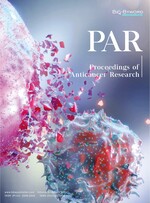Abstract
Objective: To explore the diagnostic value of serum TSH, ultrasound, and enhanced CT in papillary thyroid carcinoma with lymph node metastasis. Methods: 168 patients who underwent thyroidectomy in Shaanxi Provincial People’s Hospital from January 2020 to December 2021 were selected as the research subjects. Based on the pathological nature (benign or malignant), they were divided into two groups, with 86 patients in the control group and 82 patients in the study group. Based on whether the pathology was accompanied with lymph node metastasis, the PTC group was divided into a lymph node metastasis group and a non-lymph node metastasis group, with 51 and 31 patients in the respective groups. Retrospective analysis was conducted to observe and analyze the pathological results of the thyroid nodules’ thyroid ultrasound results, neck enhanced CT results, and thyroid function test serology results. Results: Compared with the PTC group, there were significant differences in TR classification, ultrasonic lymph nodes, and enhanced CT lymph nodes, but no significant differences in the course of disease, nodule distribution, and the number of nodules between the benign nodule group and PTC group; in the comparison of lymph node metastasis using ultrasound and enhanced CT, the number of patients with ultrasound lymph nodes without abnormal metastasis in the non-metastasis group was 28, while that of the metastasis group was 21; the number of patients with abnormal metastasis in the non-metastasis group was 3, while that of the metastasis group was 30. The number of patients with a single node without metastasis and metastasis was 14 and 8, respectively, whereas the number of patients with multiple nodes without metastasis and metastasis was 17 and 43, respectively. There were statistically significant differences in the number of ultrasound lymph nodes and nodules, but no statistically significant differences in TR classification, enhanced CT lymph nodes, nodules distribution, and disease course. Conclusion: Serum TSH can be used to identify the nature (benign and malignant) of thyroid nodules, and enhanced CT is better than ultrasound when evaluating complex lesions. It can be used as a supplement to ultrasound based on clinical context.
References
Wang M, Wang X, Li L, 2022, Study on the Characteristics of cervical Lymph Node Metastasis and Related Factors in Papillary Thyroid Carcinoma. Journal of Practical Cancer, 37(03): 520–522.
Zhang X, Deng W, Zhang Y, 2022, Progress in the Application of Ultrasonomics in Evaluating the Invasiveness of Thyroid Papillary Carcinoma. Chinese Journal of Medical Imaging, 30(03): 287–290.
Jia X, Zhang Y, 2022, Application of Ultrasound Combined with CT in the Diagnosis of Cervical Lymph Node Metastasis of Thyroid Papillary Carcinoma. Imaging Research and Medical Applications, 6(06): 191–193.
Zuo P, Yang J, 2022, Analysis of Maternal and Fetal Outcomes of Postoperative Pregnancy Patients with Thyroid Papillary Carcinoma. Chinese Journal of Obstetrics and Gynecology, 23(02): 157–159.
Li J, Wang Y, Liu H, Guo Q, et al., 2022, Clinical Application Value of High Frequency Ultrasound Combined with CT in Thyroid Papillary Carcinoma. Chinese Journal of CT and MRI, 20(03): 29–31.
Wang D, Wang D, Liang R, et al., 2021, Ultrasonic Features and Elastographic Diagnosis of Thyroid Papillary Carcinoma. Chinese Journal of Clinical Health Care, 24(06): 847–850.
Sun Y, Wu H, 2021, Relationship Between Serum miRNA-221, miRNA-451 Expression and Pathological Features and Prognosis in Patients with Papillary Thyroid Carcinoma. Zhejiang Medical Journal, 43(20): 2190–2193.
Miao X, Liu P, Kan Y, et al., 2021, Immune Cell Infiltration Pattern and Prognosis of Papillary Thyroid Carcinoma with Cervical Lymph Node Metastasis. Chinese Journal of Endocrine Surgery, 15(05): 488–493.
Xu H, Pan J, Gong X, et al., 2021, Predictive Value of CT Enhancement Combined with Thyroglobulin and Antibody in Cervical Lymph Node Metastasis of Thyroid Papillary Carcinoma. Medical Information, 34(20): 119–121 + 128.
Du K, Dong G, 2021, Clinical Efficacy and Safety of Ultrasound-Guided Radiofrequency Ablation for Thyroid Papillary Carcinoma. Basic and Clinical Oncology, 34(05): 378–381.
Zheng H, Chen W, Cai K, et al., 2021, Ultrasonic Elastography Characteristics of Thyroid Papillary Carcinoma and Its Correlation with Laboratory Detection Indexes. Journal of Clinical Ultrasound Medicine, 23(09): 708–710.
Liang Z, Shao Y, Chen L, et al., 2021, Study on the Influencing Factors of Lymph Node Metastasis in the Central Region of Multifocal Thyroid Micropapillary Carcinoma. Chinese Journal of Ultrasound Medicine, 37(09): 971–973.
Liu Y, Wu X, Li K, et al., 2021, The Value of Ultrasound-Guided Expression of Two Indicators in Predicting Cervical Lymph Node Metastasis in Patients with Thyroid Papillary Carcinoma. Journal of Practical Clinical Medicine, 25(17): 105–108 + 113.
Shu Y, Tian M, Han Z, et al., 2021, The Predictive Value of Lymph Node Size in CT Examination for Ipsilateral Central Group Lymph Node Metastasis of Single Thyroid Papillary Carcinoma. Chinese Journal of Endocrine Surgery, 15(04): 373–376.
Liu N, Xie Y, Huang Z, et al., 2021, Prediction of Cervical Lymph Node Metastasis of Thyroid Papillary Carcinoma Based on CT Enhanced Imaging Model. Radiology Practice, 36(08): 971–975.
